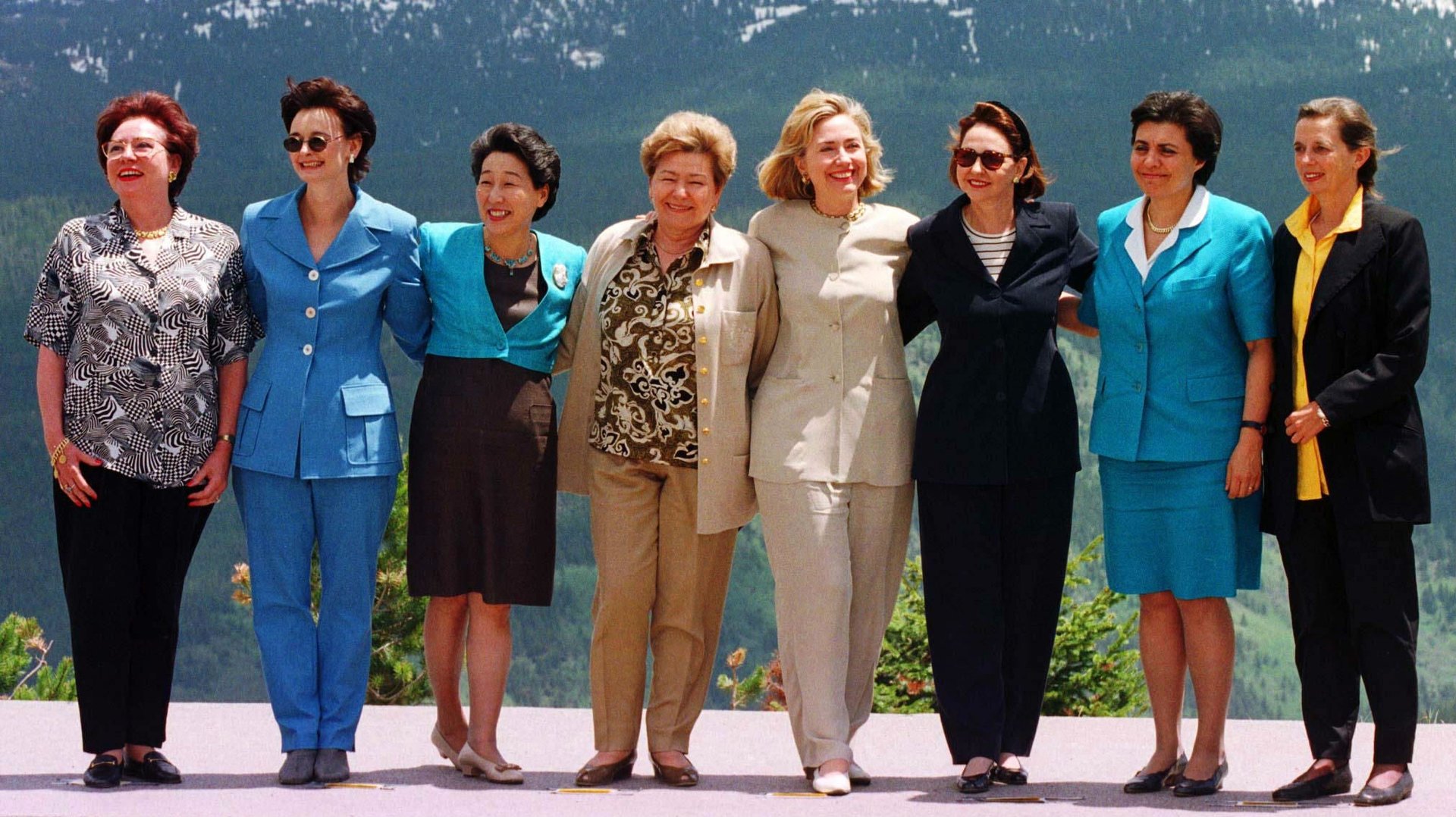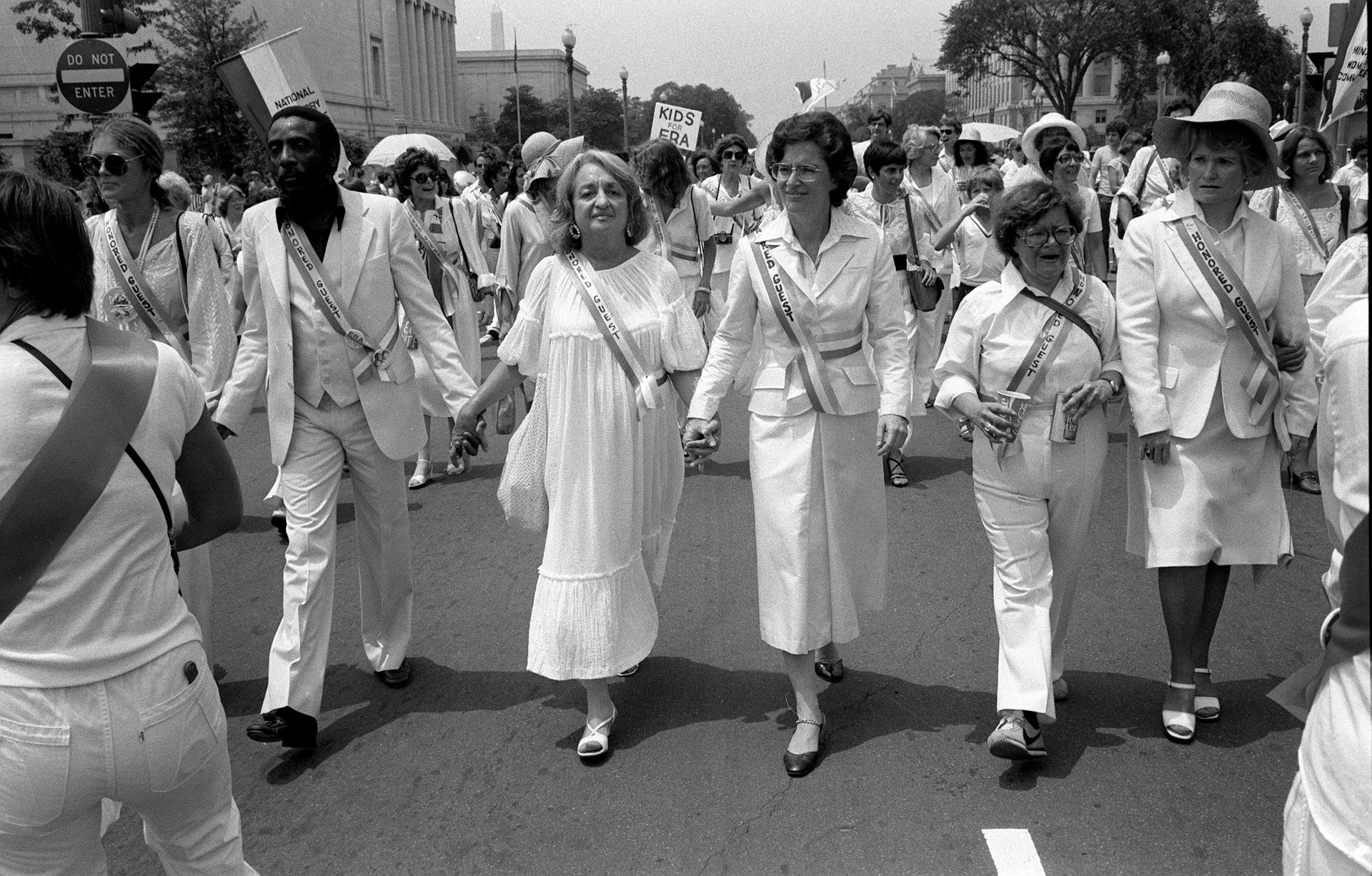The history of pantsuits shows why we care so much about female politicians’ style
After her performance during the first Democratic debate on Oct. 13, the possibility that Hillary Clinton might end up running for president of the US—and, perhaps, win—seems more concrete than ever.


After her performance during the first Democratic debate on Oct. 13, the possibility that Hillary Clinton might end up running for president of the US—and, perhaps, win—seems more concrete than ever.
In her sartorial review of the debate in The New York Times, Vanessa Friedman does a remarkable job of treating all the candidates equally—Clinton included. Indeed, no one seemed to comment on Clinton’s style this time around, which might be the most telling sign of her performance: she was so good, no one paid much attention to what she was wearing.
This is a welcome change, both for the hopeful presidential candidate’s campaign and for women everywhere.
It feels like Clinton’s style has been publicly scrutinized for so long that pantsuits have actually become a part of her identity. She’s embraced, and even instigated, the pantsuit jokes. Her supporters can buy an Everyday Pantsuit Tee on her website, and she appeared on Ellen Degeneres’s talk show with a pint-sized fan who wore a miniature version of her blue pantsuit.
But Clinton’s decision to beat her critics at their own game doesn’t change the fact that women in politics (and throughout the professional world, generally) continue to receive a particularly intense amount of scrutiny over what they wear.
Following the most recent GOP debate on Sept. 15, men’s lifestyle website Kempt ranked each candidate’s style for the evening. While the male candidates were lightly teased for wearing pretty much identical outfits, Carly Fiorina did not even make the list. Instead, she was noted as “Honorable Mention #1.”
“She isn’t ranked here because women’s fashion is also not something we’re dipping our toes into today,” noted the magazine, “but Carly’s look was a step above a certain somebody’s pantsuits. And also pantsuits in general.” Even when Clinton’s not onstage, her look is subject to criticism.
At her campaign’s opening rally in June, Clinton donned a pantsuit designed by Ralph Lauren, the fashion world’s longtime arbiter of homegrown, American luxury. Shortly after, Friedman published a piece titled “Why It Matters that Hillary Clinton Wore Ralph Lauren” in the Times. Friedman points out that “clothes are a political tool like any other.”
Indeed, clothes do serve as a political tool—but only when women are wearing them.
Whether it’s Chancellor Angela Merkel receiving flack for the supposedly low-cut dress she wore to the inauguration of the Oslo National Opera or Sarah Palin getting called out for her “impressively bad outfits,” women—particularly in the political realm—can’t win, no matter what they wear. Meanwhile men can waltz around in whatever they want with nary a peep from the press.
A little history may be helpful here. Women were forbidden from wearing pantsuits on the floor of the Senate until 1993, thanks to a policy that sought to keep women from wearing the pants (literally) in a space they shared with male peers. At long last, senators Barbara Mikulski and Carol Moseley Braun (the first woman of color to be elected to the Senate) stopped waiting for permission and rebelled by wearing pantsuits anyway.

It is an unfortunate truth of fashion history that it took a borrowed-from-the-boys look to signify power for women. As New York-based writer and media scholar Minh-Ha T. Pham contends in her 2011 Ms. Magazine article, “If the Clothes Fit,” women’s appropriation of more masculine styles of dress starting in the 1980s primarily functioned as “an attempt to access the social and economic capital that lay on the other side of the glass ceiling.”
Where Clinton’s attire is concerned, however, any power her pantsuits might generate in the political arena is constantly undermined by snarky suspicions regarding her “femininity” (and the closely-linked question of her “likability”).
On the other hand, when worn by men, clothes are just clothes. Powerful male leaders need not stray from a nondescript, repetitive look to achieve and maintain success. As President Obama told Vanity Fair, his monotonous style saves him precious time: “I don’t want to make decisions about what I’m eating or wearing. Because I have too many other decisions to make.”
“I wonder if the debates surrounding what women in power should wear is a reflection of our ambivalence towards fashion in general,” the Paris-based editor Anja Aronowsky Cronberg told Quartz. Cronberg, who formerly edited Acne Paper, founded Vestoj in 2009, an annual journal that aims to generate critical conversations centered on dress and fashion.
As Cronberg explains, “The male business suit has become a sort of fashion archetype with great symbolic significance. It’s a symbol of power and professionalism in corporate culture and politics, but it also signals monotony, conformism and complacency.” When it comes to finding “feminized alternatives” to the traditionally male business suit—with all its evocations of status and power—Cronberg clarifies, “we’re not there yet.”
For all Clinton’s self-aware enthusiasm regarding her attire, it seems even a future president might find it impossible to change that.